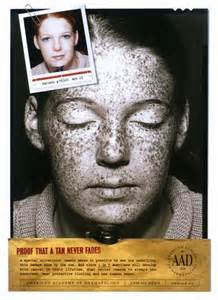While outdoors, protect yourself and your family with a broad spectrum sunscreen containing a high SPF and be certain to reapply regularly throughout the course of a day. Unprotected exposure to natural and artificial UV light increases your risk of skin cancer. Although skin cancer may be treatable with an early diagnosis, melanoma (the deadliest form of all skin cancers) accounts for more than 9,700 of 13,000 skin cancer deaths each year according to research by the American Cancer Society. Without proper sun defensive care, a blistering sunburn or unchecked mole has the potentiality to cause serious health complications.
Is skin cancer preventable? Absolutely although there are certain predispositions to higher risk individuals of skin cancer. This includes fair skin, severe sunburn(s) from the past, family history of skin cancer, tanning (from natural and artificial light), and of course unprotected exposure to UV rays. However, everyone no matter their skin type, should safeguard themselves with a medical-grade sunscreen.
Strategies to keep in mind for optimum sun protection include:
- Avoidance of midday activities when UV rays are most harmful to the skin (between the hours of ten and four)
- Seeking shade when possible
- Wearing protective clothing i.e. long-sleeved shirts and pants
- Avoidance of sun tanning and tanning beds
- Lastly, ALWAYS wear sunscreen of at least 30 SPF.
Schedule an appointment with a board-certified dermatologist for a comprehensive skin exam. The sooner, the better timing makes a life-changing difference! When administering a self-spot check, follow the ABCDE’s of skin cancer and differentiate between what appears normal versus a suspicious mole.
Asymmetrical shape – One half of the spot is unlike the other half.
Borders – Irregular, scalloped, or poorly defined borders around the spot.
Color – Certain shades of tan, brown, black, white and red are considered abnormal colors.
Diameter – If the spot in question is larger than the width of a pencil eraser, this may be considered cancerous.
Evolving shape – The shape and size of the spot has changed over time.
Tanning myths to keep in mind…
Indoor tanning is safer than tanning from natural sunlightâfalse. Whether you are receiving UV radiation from the sun or from a tanning bed you are at great risk of developing skin cancer and premature aging. In fact, The Skin Cancer Foundation has found that more than 419,000 cases of skin cancer in the US are linked to indoor tanning
More than 90% of visible signs attributed to skin aging are caused by the sun and indoor tanningâtrue. The most effective product to protect your skin from developing wrinkles, red or brown spots, and skin laxity is sunscreen.
Individuals who use a tanning bed before the age of 35 are seventy-five percent more likely to develop melanomaâtrue. Teens account for an alarming number of indoor tanners. As of September 2, 2014, ultraviolet (UV) tanning devices were reclassified by the FDA from class 1 (low to moderate risk) to class 2 (moderate to high risk devices).
References:
Wehner M, Chren M-M, Nameth D, et al. International prevalence of indoor tanning: a systematic review and meta-analysis. Jama Dermatol 2014; 150(4): 390-400.
Lazovich D, Vogel RI, Berwick M, Weinstock MA, Anderson KE, Warshaw EM. Cancer Epidem Biomar Prev 2010 June
Gilchrest BA. Skin and aging process.

